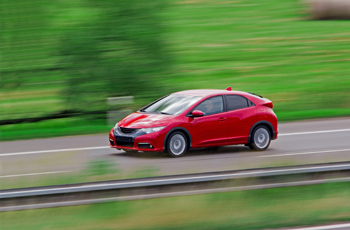Our DMV-approved online drivers education course is designed just for teens. Study at your own pace, pass the final test, and get your certificate.
Sign Up Now – Only $19.90 Learn More About Teen Drivers EdKinetic energy is the energy that is caused by the motion.

The kinetic energy of an object is the energy or force that the object has due to its motion.
Your moving vehicle has kinetic energy; as you increase your vehicle's speed, your vehicle's kinetic energy increases. The greater your vehicle's kinetic energy, the greater the effort that will be required to stop the vehicle.
An important fact to know is that kinetic energy increases exponentially; this means that if you double your vehicle's speed, your vehicle's kinetic energy increases by four times. This also means your braking and stopping distance will be multiplied by four.
There are a lot of factors such as the road’s condition and the vehicle's brake system that can impact the stopping distance of a moving vehicle, but generally, in ordinary road conditions, if you are traveling at 30 mph, your stopping distance is 45 feet. If you double your speed to 60 mph, your vehicle's kinetic energy quadruples, so your vehicle's stopping distance also quadruples (4 X 45 feet = 180 feet).
Also, remember that it will take most people, on average, three-quarters of a second to respond to a hazardous situation and apply brakes, so you will also need to add the time distance that it will take for you to react and apply your brakes.
Example: If you are going 60 mph, you are driving at 88 feet per second. Thus, if it takes you one second to react to a hazard and apply your brakes, you will need to add 88 feet to the above number for stopping distance (180 feet kinetic energy requirements + 88 feet reaction time = 268 feet).